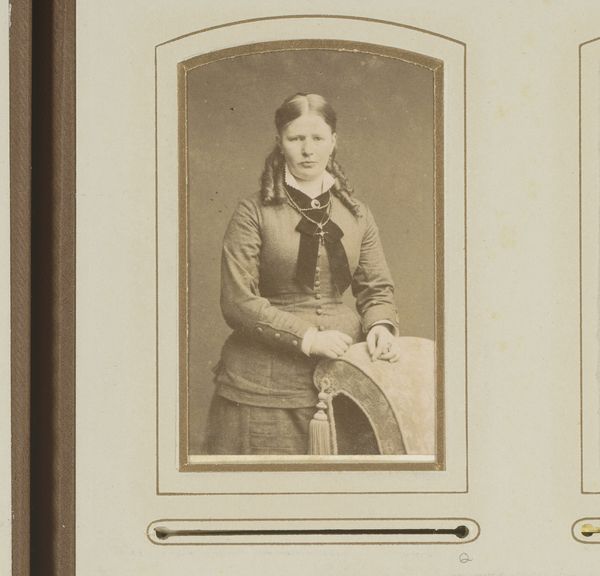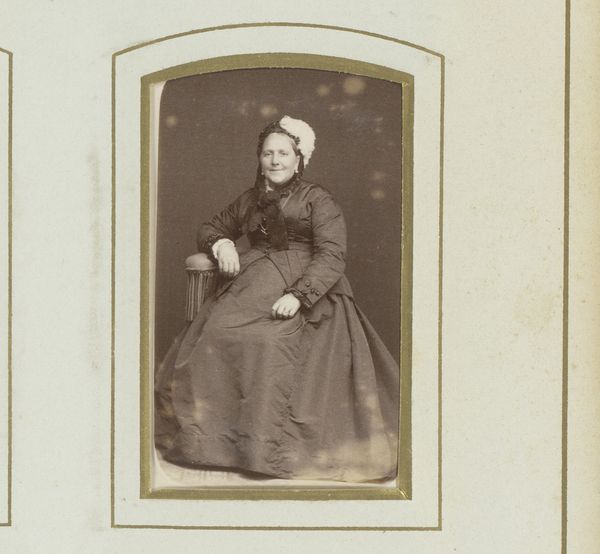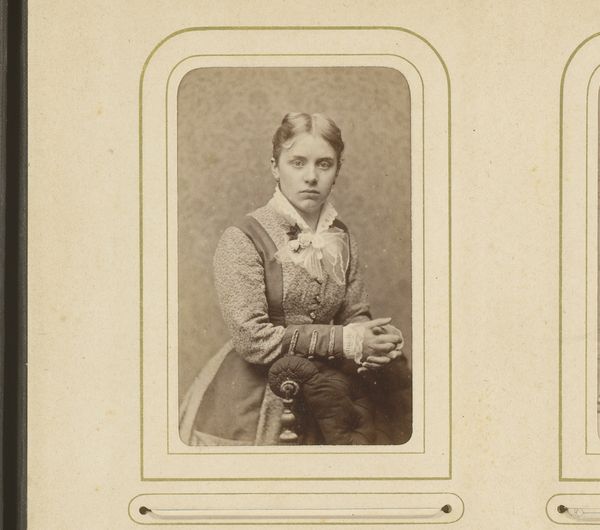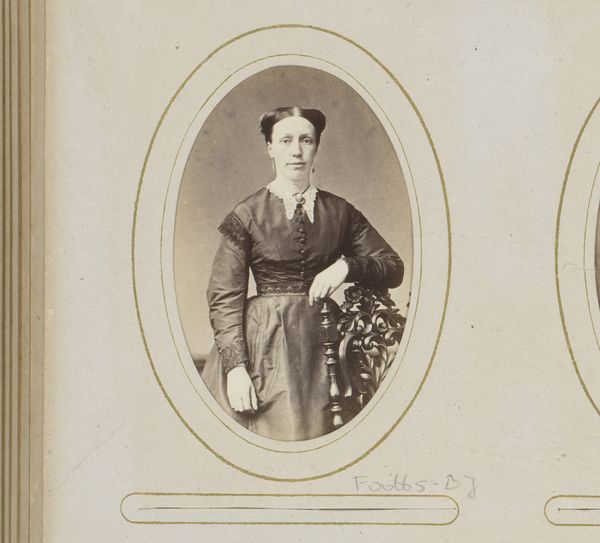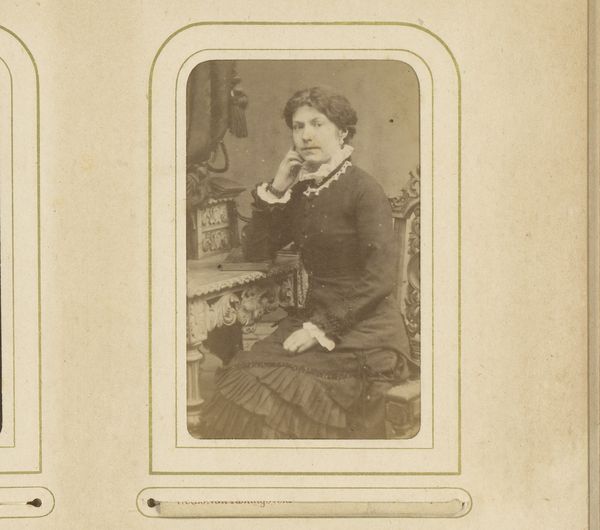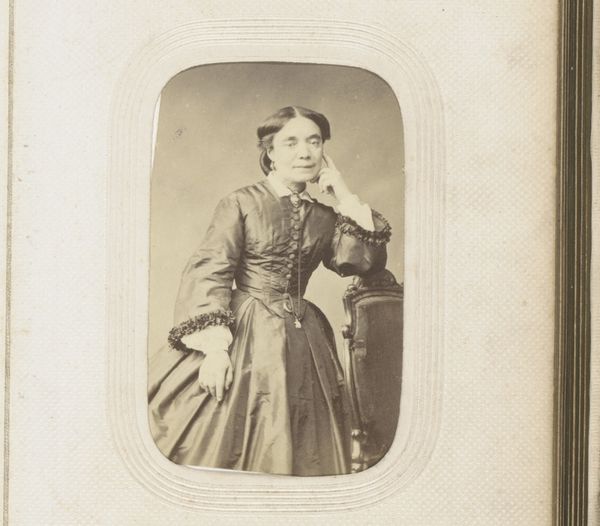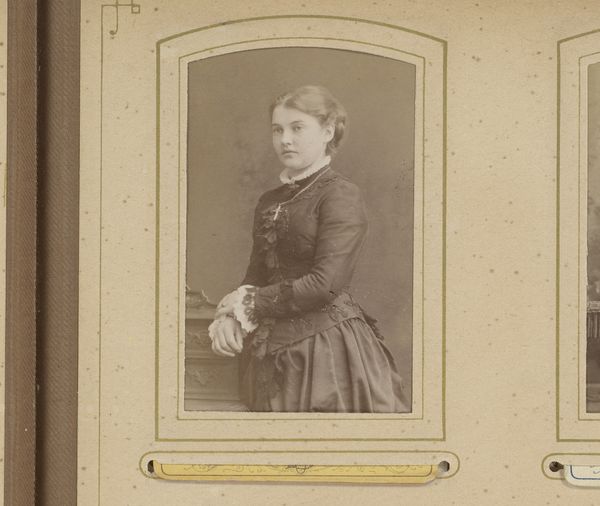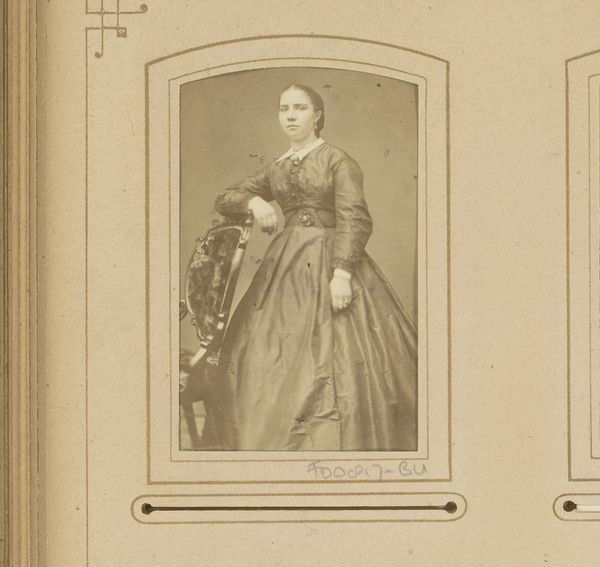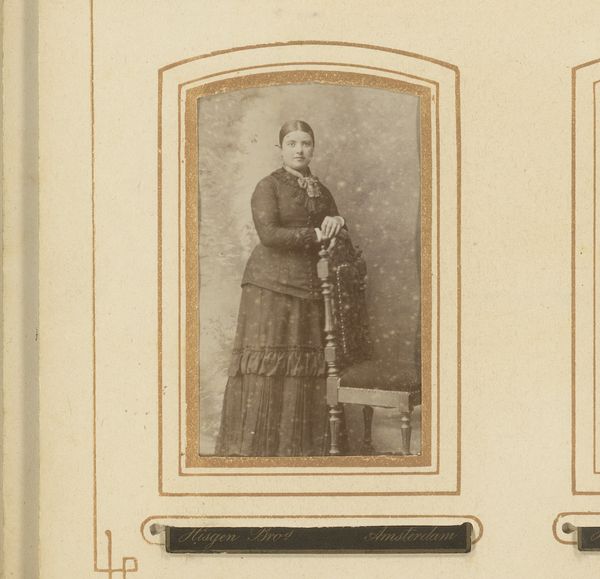
daguerreotype, photography
#
portrait
#
daguerreotype
#
photography
#
19th century
Dimensions: height 101 mm, width 64 mm, height mm, width mm
Copyright: Rijks Museum: Open Domain
Curator: Looking at this photograph, I immediately sense a posed composure. The woman’s expression is carefully neutral, almost studied, like she’s very aware of the camera’s presence. Editor: And I’d agree. Here we have "Portret van Elise Hwasser," a daguerreotype taken sometime between 1850 and 1890 by the artist Matheus Hansen. The material itself, a daguerreotype, suggests something of its historical positioning, belonging to the rising middle classes and the democratisation of image making in that era. Curator: The hand placed thoughtfully at her chin seems almost theatrical, a gesture suggesting contemplation or intelligence perhaps? What do you think of her costume? Editor: Her dress, while quite subdued in tone, hints at a certain social standing. The detailing around the collar and sleeves is not something available to everyone. And then you have to consider how it shapes our understanding of feminine ideals during the mid-to-late 19th century. It projects a particular view of femininity— reserved, refined, but subtly hinting at a privileged existence. Curator: It strikes me that the pose mimics painted portraits, the artist consciously positioning Hwasser within an artistic tradition. And it really does signal class status – the way that this relatively new technology becomes rapidly deployed across social stratifications and the making of personal albums and domestic viewership. What emotions would such objects trigger? Editor: Definitely. Beyond class and social meanings, let’s think about those emotional reverberations across the passing of time. This careful pose, preserved on metal, it transcends a singular reading – like time collapses – do you think the photographic technology has changed how we regard visual symbol and memorial making? Curator: Certainly. The daguerreotype offers a degree of verisimilitude unattainable through paint. Its meticulous details give the impression of immediacy. A lasting personal monument for a young women! Editor: Looking at Elise Hwasser captured like this it definitely makes me want to find out more about her life. Curator: Me too – such are the powers of these time capsules and how we read them.
Comments
No comments
Be the first to comment and join the conversation on the ultimate creative platform.
